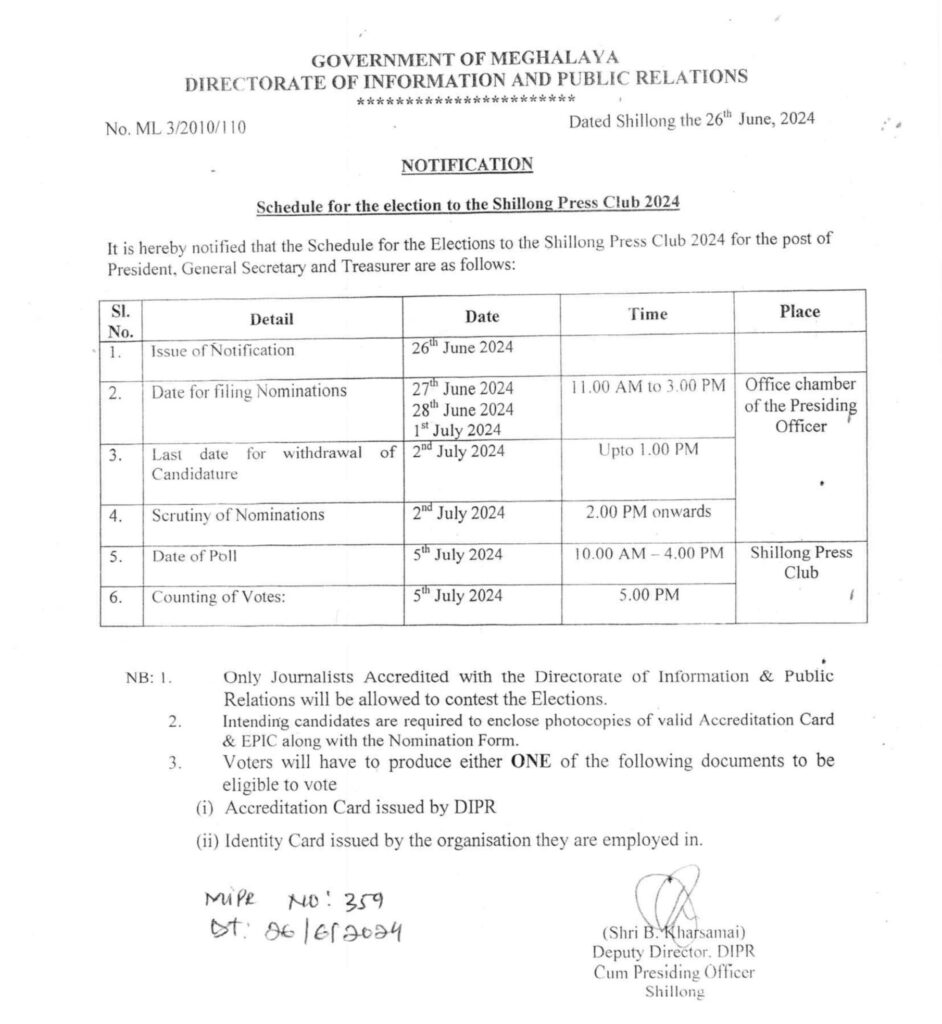GUWAHATI, JUNE 27: In a groundbreaking discovery for biodiversity conservation, officials from the Assam Forest Department and conservationists have recorded the first photographic proof of the Mainland Serow in the newly declared Raimona National Park in Assam. This vulnerable mammal species, listed by the International Union for Conservation of Nature, was captured on camera in two separate events near the Ganda Bajrum Anti-poaching camp, located in the park’s western range.

The photographic evidence was gathered using white flash passive Panthera V6 digital camera traps, operated by Aaranyak, the region’s foremost biodiversity conservation organization, in collaboration with the Assam Forest Department. This significant finding has been documented in a scientific paper published in the Journal of Threatened Taxa. The paper is authored by Aaranyak’s senior scientist Dr. M. Firoz Ahmed, senior conservation biologist Dr Dipankar Lahkar, Nibir Medhi, Nitul Kalita, Bhanu Sinha AFS (DFO of Kachugaon Forest Division), forest official Pranjal Talukdar, Biswajit Basumatary, Tunu Basumatary, Dr. Ramie H. Begum (Associate Professor, Assam University, Diphu campus), and Dr. Abishek Harihar (Director of the Tiger Program, Panthera).

“The discovery of Mainland Serow in Raimona National Park is excellent news for biodiversity conservation. We are thrilled by this finding. Our goal is to conserve this species and other wildlife extensively in the national park,” said Bhanu Sinha DFO of Kachugaon Forest Division.

The Mainland Serow population is widely distributed in the neighbouring Phibsoo Wildlife Sanctuary and the Royal Manas National Park of Bhutan, which may contribute to Raimona National Park’s population recovery.
“We extend our warmest thanks to the National Park Authority for their collaborative efforts that led to the discovery of this beautiful species. Raimona National Park has a wealth of wildlife, and finding this species is positive news for the conservation world,” stated Dr. M. Firoz Ahmed, senior scientist with Aaranyak.
“The Mainland Serow ( Capricornis sumatraensis thar ) is found in various habitats extending from the Himalayas on the Indian subcontinent to southern China, mainland southeastern Asia, and Sumatra. The species’ populations are fragmented, isolated, and rapidly declining due to poaching, habitat destruction, and habitat loss. The lack of reliable data on this species’ abundance and distribution makes it difficult to implement effective conservation actions to ensure their long-term survival,” explained Dr Dipankar Lahkar, a senior conservationist with Aaranyak.

Occasional poaching for bushmeat and habitat alteration due to logging during ethnopolitical violence are the primary conservation concerns for Raimona National Park. With the government now protecting the park, future conservation efforts should focus on securing and recovering the species’ population and restoring degraded habitats.
The Assam government declared the area a national park on June 8, 2021. After nearly three decades of ethnopolitical violence, the Bodoland Territorial Council (BTR) was established in 2020, which has fueled conservation efforts since then. The Mainland Serow was recorded on December 29, 2020, at 9:12 AM and 1:46 PM, respectively, at an elevation of 96 meters near the Ganda Bajrum Anti-poaching camp, located in the Western Range of Raimona National Park. This is the first photographic evidence of the Mainland Serow in the park.
Contrary to previous records, this current photographic evidence of the Mainland Serow is likely the lowest elevation record from the Indian subcontinent and is close to human settlements, suggesting that more studies on habitat associations are necessary. Previously, the species was recorded at elevations between 100–300 meters in Assam. However, no studies have been conducted on the species’ habitat requirements in this region, which is crucial for implementing species-specific conservation actions. “With the government now protecting the park, future conservation efforts should consider securing and recovering the species’ population and restoration of the degraded habitats,” the researchers said in the study.
Read: Sleeping shocker: Thai man wakes up to Cobra snuggled inside his boxers
WATCH:
Find latest news from every corner of Northeast India at hubnetwork.in, your online source for breaking news, video coverage.
Also, Follow us on-
Twitter-twitter.com/nemediahub
Youtube channel- www.youtube.com/@NortheastMediaHub2020
Instagram- www.instagram.com/ne_media_hub





